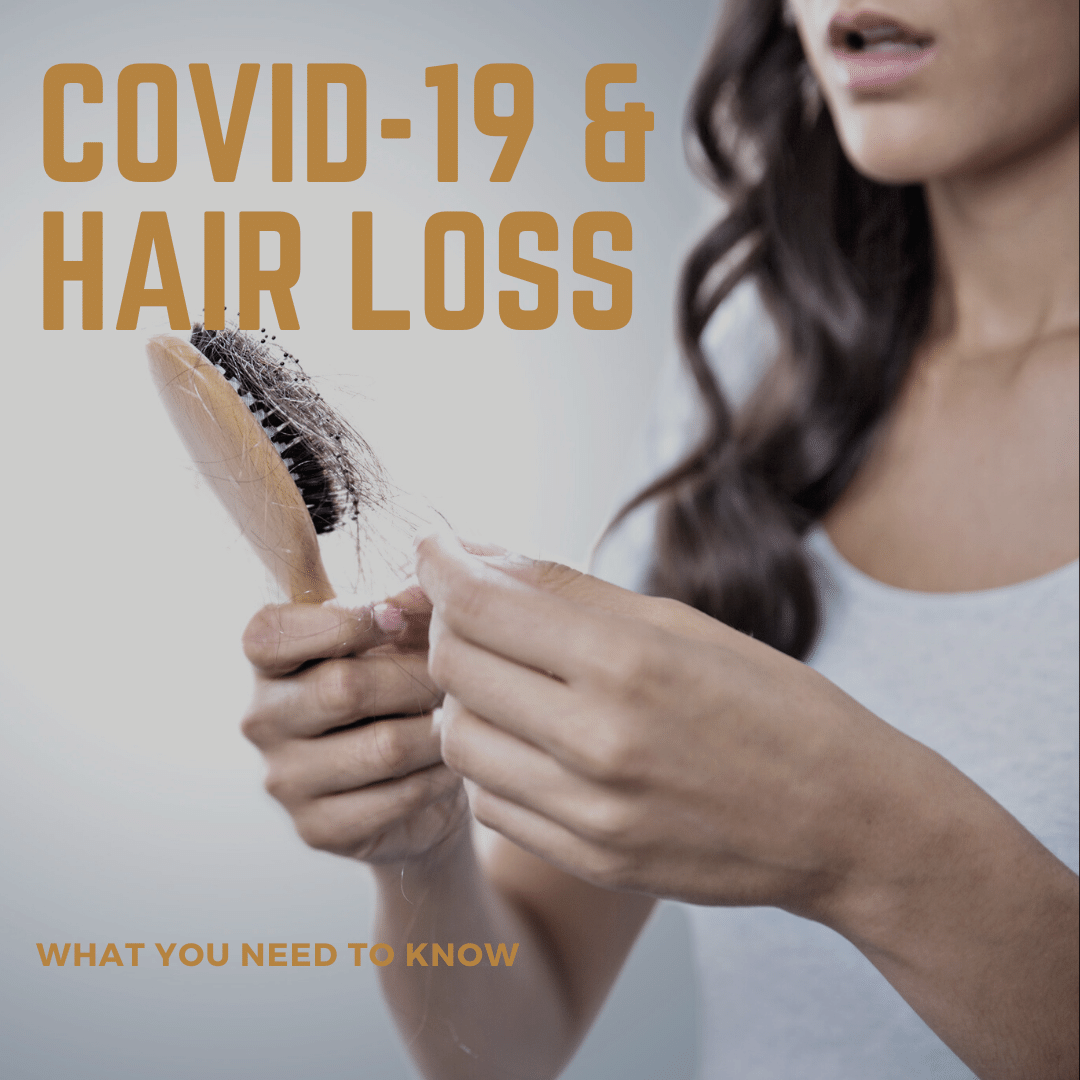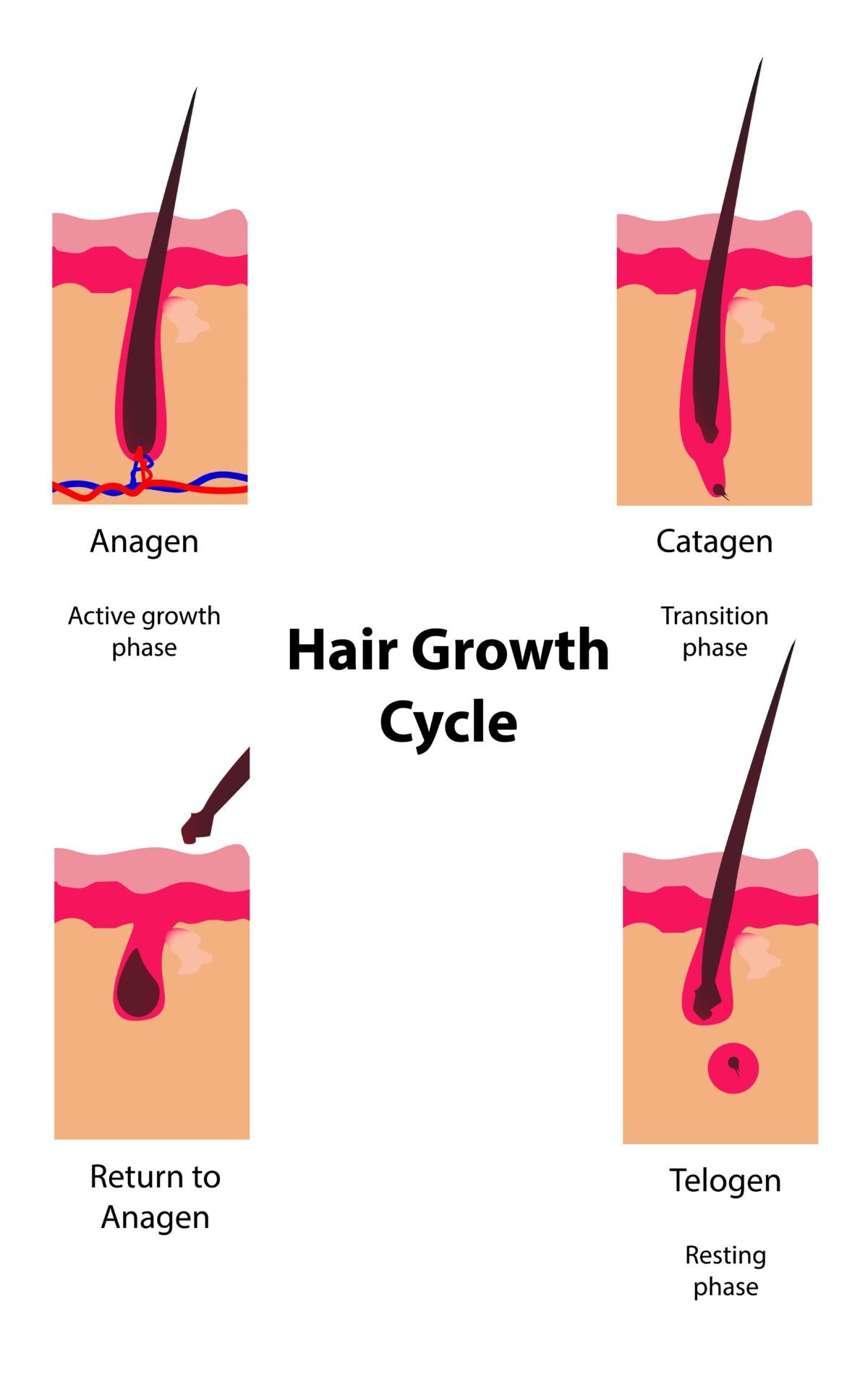COVID-19 & Hair Loss: What You Need To Know
COVID-19 is a virus that has been making headlines all over the world. While the focus has been on the potential for this virus to cause serious health problems, there is another side effect that has been getting less attention: hair loss. Yes, it’s true – COVID-19 can cause hair loss. In this blog post, we will discuss how COVID-19 can lead to hair loss and what you can do about it. We will also discuss PRP therapy and how it can be used to treat hair loss caused by Covid-19.

THE BASICS OF HAIR GROWTH
Before looking at how COVID-19 can cause hair loss, we must first have a basic understanding of how the hair growth cycle works.
There are four main phases of hair growth: anagen, catagen, telogen, and exogen. An individual’s hair is always in one of these four phases at any given time, though the percentage of hairs will vary depending on how long they have been growing for (anagen) or resting (telogen). The amount of time spent in each phase is determined by genetics and can differ from person to person.

Anagen Phase:
The anagen phase, also known as the growing phase, of the hair growth cycle is when a hair follicle produces new cells which push older cells up and out of the follicle. During the anagen phase, hair growth will continue until the hair is cut or reaches the shedding phase. The anagen phase of scalp hairs can last anywhere between 3-5 years, and it is during this time that hair grows at its fastest rate (about one centimeter per month). Other types of body hair, such as eyebrow hair, have shorter anagen phases. Around 90% of your hair is in the anagen phase.
Catagen Phase:
After the anagen phase, also known as the transition phase, a hair enters the catagen stage, which lasts for about 10 days or so. During the catagen phase, growth slows down significantly until the hair stops growing. This phase is also when a hair follicle shrinks and the hair detaches from the follicle, however it remains in place. Around 5% of your hair is in the catagen phase.
Telogen Phase:
The telogen phase, also known as the resting phase, of the hair growth cycle lasts for about three months on average. During the telogen phase, the hair does not grow, nor does it fall out. New hairs also start to form within the follicles. Around 10-15% of your hair is in the telogen phase.
Exogen Phase:
The exogen phase, also known as the shedding phase, of the hair growth cycle is when old hairs fall out and new hairs are growing in the follicles. This usually happens gradually over a period of time, usually between 2-5 months. The average person sheds around 50-100 hairs per day. Considering the average human has approximately 100,000 hairs on their head, less than 1% of your hair is in the exogen phase.
HOW COVID-19 CAN CAUSE HAIR LOSS
Now that we have a basic understanding of the hair growth cycle, let’s look at how COVID-19 can cause hair loss. According to the American Academy of Dermatology, hair loss can be caused by various factors such as:
age
genetics
hormonal imbalances
medications
stress
In the case of COVID-19 patients, it is believed that the virus can cause hair loss due to extreme stress. Telogen effluvium, or excessive shedding of hairs, is the second most common form of hair loss and is the type of hair loss associated with COVID-19. When a person is stressed and this stress becomes extreme, such as in the case of COVID-19 patients or those who have been quarantined for an extended period of time due to Covid-19, it can cause telogen effluvium.
When the body experiences extreme stress, more hairs than normal enter into their telogen phase, and as a result, as much as 50% of your hair can fall out when the telogen phase ends. On average, telogen effluvium results in about 300 hairs being shed daily for around 6 months. Although the stress can cause telogen effluvium immediately, the effects won’t be noticed until about after three months once the telogen stage is complete. This is why COVID-19 patients may experience an excessive amount of hair loss in months following the initial onset of symptoms.
HOW PRP THERAPY CAN HELP TREAT HAIR LOSS FROM COVID-19

Fortunately, the effects of telogen effluvium are temporary and your hair will eventually grow back. However, it can take some time for your hair to get back to normal. Luckily, there are treatments available for those who are experiencing (or have experienced) hair loss due to COVID-19, such as PRP hair restoration therapy.
Platelet Rich Plasma (PRP) hair restoration therapy is a treatment that uses a sample of your own blood to extract and deliver plasma rich in platelets to areas affected by hair loss. The process begins with a blood draw, typically from the arm. The blood is then placed in a centrifuge and spun at high speeds to separate the different parts of the blood.
This process separates the blood into red blood cells, white blood cells, and plasma. Within the plasma, there is platelet-rich plasma and platelet-poor plasma. The platelet-rich plasma contains about 2-6 times the original blood concentration of platelets, stem cells, and various growth factors that can help promote new hair growth. These components make PRP ideal for hair loss treatment.
When PRP is applied to an area affected by hair loss, it helps to stimulate the growth of new hair follicles. In some cases, microneedling may also be performed to allow for maximum penetration and increase the effectiveness of PRP treatment. PRP therapy, both with or without microneedling, has been found to be an effective treatment for various forms of hair loss, including telogen effluvium.
IN CONCLUSION
COVID-19 can cause a form of hair loss known as telogen effluvium. This hair loss usually occurs within months of the initial onset of symptoms because more hairs than normal enter into their telogen phase earlier and subsequently fall out. Although the effects of telogen effluvium are temporary and your hair will eventually grow back, PRP hair restoration therapy is available for those who are experiencing (or have experienced) hair loss due to COVID-19.
